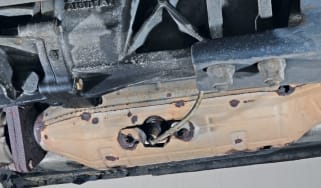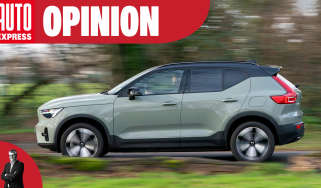DS 3 review
The DS 3 is a left-field choice in the small premium SUV segment, and one that’s been developed with comfort in mind

The DS 3 stands out from the crowd with a style that’s all its own, but it’s average in most other respects. While there’s a generous amount of standard equipment, DS 3 prices are high for a small premium SUV, especially when it can’t match its rivals for outright quality and polish.
Designed with comfort in mind, the DS 3 is easy to drive and reasonably refined, but it lacks the control you get from its competition. Both the petrol and electric powertrains are strong enough, though, with the DS 3 E-Tense getting an impressive range boost as part of a mid-life facelift.
Our choice: DS 3 1.2 PureTech 100 Performance Line
About the DS 3
The DS brand is a luxury arm of Stellantis, the parent company of several car makers including Peugeot, Citroen and Vauxhall. Previously, the DS name was attached to high-end Citroen models, but now it stands on its own. Its range now includes the DS 7 mid-size SUV, DS 9 saloon and DS 4 hatchback, with the DS 3 serving as the brand’s entry-level model.
The French firm’s small SUV is based on the same Common Modular Platform as Peugeot’s 208 supermini and 2008 SUV, and is offered with a choice of petrol or electric power. The DS 3’s combustion-engined competitors include the Audi Q2, along with higher-end versions of the Volkswagen T-Roc, while the fully-electric DS 3 E-Tense competes with the Vauxhall Mokka Electric, Hyundai Kona Electric and Kia Soul EV.
Used - available now

2024 DS
DS 3
9,788 milesManualPetrol1.2L
Cash £14,750A facelift for 2023 saw a number of changes made to the DS 3, including the ‘Crossback’ part of the model’s original name being dropped, the removal of a diesel engine from the line-up and the addition of a new infotainment system.
The petrol engine is a turbocharged 1.2-litre three-cylinder unit that, in base PureTech 100 guise, is paired with a six-speed manual gearbox, while PureTech 130 cars get more power and an eight-speed automatic.
The DS 3 E-Tense received more significant updates for 2023, most notably a larger 54kWh battery and more power. As a result, the small electric SUV now offers up to 250 miles on the WLTP combined cycle – nearly 60 miles more than the old model. The DS 3 E-Tense is among a growing number of EVs that qualify for the Government's Electric Car Grant (ECG) announced in July 2025. The E-Tense is eligible for the £1,500 grant, which is applied automatically when you buy.
There are three trim levels to pick from – Performance Line, Esprit de Voyage, and Opera – but even entry-level models get 17-inch alloy wheels, keyless start and a 10.3-inch infotainment system with Android Auto and Apple CarPlay connectivity. DS’ Safety Pack is also fitted as standard, and this includes automatic emergency braking, lane-keep assist and speed limit recognition. This pack helped the DS 3 gain its five-star safety rating from Euro NCAP.
Performance & driving experience
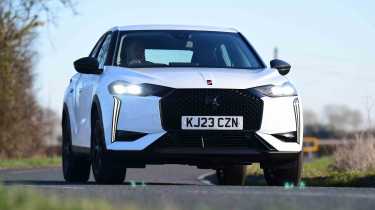
Just like a number of its Citroen siblings, the DS 3 has been developed with comfort in mind, rather than sportiness. It’s relatively light on its feet, with soft, compliant suspension and reasonable refinement. It isn’t the most engaging small SUV, however; the Ford Puma sets the benchmark for this class in that respect, but even the Peugeot 2008, with which the DS shares its basic platform, feels sharper to drive.
The DS 3 is better suited to smaller city streets, we feel, because faster driving really is not its forte. There aren’t many thrills to be had, either, given that the light steering is devoid of feeling, although it does make this small SUV easy to manoeuvre around town.
The DS 3 has the option of a frugal 1.2-litre 3-cylinder petrol or fully-electric power. If you’re going to go with petrol power, the PureTech 100 is the pick of the bunch. Despite being the least powerful DS 3 it’s a torquey engine with plenty of mid-range pulling power that copes well in town, and only needs working a little harder on faster A roads and Motorway speeds to keep up with traffic. The more powerful PureTech 130 comes exclusively with an eight-speed automatic gearbox, which can feel a bit sluggish at higher speeds, and isn’t as smooth as we’d like around town when trundling through traffic and when parking.
Meanwhile, the electric DS 3 E-Tense doesn’t leap forward or pin you back in your seat like the fastest EVs we’ve tested. Instead, it feels more natural when accelerating, with a similar off-the-line progression to a petrol DS 3 with an automatic transmission.
0-62mph acceleration and top speed
There is the choice of either a 1.2-litre three-cylinder petrol engine or an all-electric powertrain available in the DS 3. The petrol engine range starts with the PureTech 100 and is only available in the base Performance Line spec. The standard six-speed manual gearbox helps make the most of the 100bhp output of this engine, and its 0-62mph of 10.9 seconds is perfectly capable of keeping up with traffic. The top speed stands at 112mph.
Upgrading to the PureTech 130 bumps the DS 3’s power output up to 128bhp and 230Nm of torque, and adds the eight-speed auto ‘box we mentioned earlier. The 0-62mph time also drops to 9.2 seconds, and the top speed goes up to 124mph.
Unlike some EVs, the DS 3 E-Tense isn’t that much faster than its petrol-powered counterparts. The single electric motor that drives the front wheels (just as in the PureTech 100 and 130 editions) produces 154bhp and 260Nm, but due to the extra weight of the 54kWh battery pack, this version takes nine seconds to hit 62mph. It then maxes out at a limited top speed of 93mph.
MPG & running costs
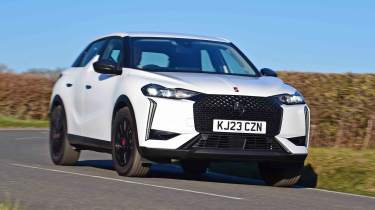
The petrol DS 3 range isn’t as economical as the mild-hybrid Ford Puma, or the hybrid Nissan Juke and Toyota Yaris Cross. It also falls behind the plug-in hybrid Renault Captur, which makes a better small company car choice. However, there is an all-electric DS 3 E-Tense, which will be much more appealing to those paying Benefit-in-Kind (BiK) tax.
The base PureTech 100 is the most frugal petrol-powered DS 3, capable of returning up to 54.3mpg. The more powerful PureTech 130 with its eight-speed automatic gearbox isn’t as efficient, achieving up to 48.7mpg. However, rivals like the Juke and Yaris Cross have hybrid versions that can officially manage around 60mpg, and emit less than the DS 3. Emissions for the petrol-powered DS 3s aren’t class-leading either, ranging from 117g/km for the PureTech 100, and 130g/km for the PureTech 130.
Of course, if you’re concerned about tailpipe emissions or want to cut down on your running costs, then the all-electric DS 3 E-Tense is the model to go for. As part of the facelift for 2023, the small electric SUV now uses a 54kWh battery (up from 50kWh at launch), boosting its range from 193 miles to 250 miles on the WLTP combined cycle. All these figures are subject to varying wheel sizes and weight changes depending on which trim level you choose – stick with smaller wheels if economy and efficiency are primary concerns.
Recharging the 54kWh battery (51kWh useable) can be done at speeds of up to 100kW using a suitable rapid charger, and should take around 30 mins to top up from a 10 to 80 per cent state of charge. Most will try and take advantage of cheaper overnight electricity rates and utilise a 7.4kW wallbox charger at home. In a worst-case scenario, it’ll take 7.5 hours to fully charge a flat battery at that speed.
Until 2025, the zero-emission DS 3 E-Tense is exempt from road tax, as well as the London Congestion Charge.
Insurance groups
The DS 3 occupies insurance groups 15E to 21E for the petrol range, and groups 29A to 31A for the E-Tense electric model.
The lower end of that spectrum accounts for PureTech 100 models, with premiums increasing with engine power and pricier trims. For comparison, the Audi Q2 begins one group below and tops out (sporty SQ2 notwithstanding) in group 20 for a 35 TFSI petrol model. For a cheaper to insure electric rival, look towards the Renault Megane E-Tech, which starts in group 25, or the Peugeot E-2008, starting in group 26.
Our Car Tax Checker tool lets you check your tax status and renewal date in seconds. Check your VED car tax now...
Depreciation
Despite its left-field appeal, the DS 3 petrol range is likely to hold onto its value, according to our experts, similarly to the Audi Q2, ranging between 44 per cent for the entry-level Performance Line over three years and 36,000 miles, to 47 per cent for the top-of-the-range Opera trim. That’s a decent result, although it can’t match the Volkswagen T-Cross, which ranges from 50 to 54 per cent in terms of retained value over the same period.
The electric E-Tense doesn’t perform nearly as well, ranging from 37 to 40 per cent, while the similarly priced Kia Niro EV maintains a much healthier 55 to 57 per cent of its resale value over the same period.
To get an accurate valuation on a specific model check out our free car valuation tool...
Interior, design & technology
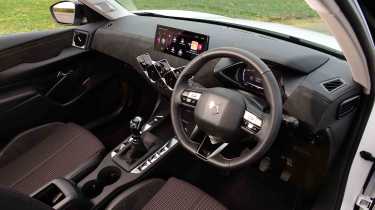
The original DS 3 Crossback was the first PSA Group product to use the Common Modular Platform (CMP). This platform has now been carried over by the brand’s new parent company, Stellantis, and it's the same one that’s found under the Peugeot 2008 and Vauxhall Mokka. It’s a rigid structure that’s also been designed to allow for the inclusion of electrified powertrains, uprated in-car technology and Level 2 autonomous driving aids.
From the outside, the DS 3 looks the part. Thanks to a bold front end with a large grille, a usefully lofty ride height, and a distinctive kick in the windowline on the car’s profile, it won't be mistaken for anything else. The party-piece deployable door handles pop out when you unlock the car, while the DS 3 stands out thanks to its pair of vertical LED strakes on either side of the grille.
There are up to seven exterior colour choices, and depending upon your trim choice, the grille is either decorated with gloss black or chromed diamond tips, a contrasting roof, and four different alloy wheel designs.
Things are just as interesting inside. The interior is a cacophony of tactile materials, geometric shapes and (unfortunately) oddly placed buttons. It looks unlike anything else on the market, but clearly, the design has been put ahead of ergonomics in some places. Lots of key features are controlled via the car’s dash-top infotainment screen, and instead of any physical buttons, the DS 3 uses touch-sensitive diamond-shaped tiles that offer no haptic feedback to let you know you’ve pressed them hard enough. This isn’t helpful on the move, especially considering we had to press some buttons multiple times before anything happened at all.
Of the few physical controls there are, the electric door mirror controls are hidden behind the steering wheel and are difficult to see. Meanwhile, all the window switches are located around the gear lever, and they have a geometric pattern that may look nice, but it is impossible to differentiate between them at a glance. It all takes a bit of getting used to the DS 3’s strange layout.
However, the premium material choices don’t suffer significantly in lower-spec models compared with higher trim levels. In our view, the entry-level Performance Line model is classy enough inside to make you question the worth of opting for the high-end Esprit de Voyage and Opera cars.
If you’re heart is set on going for one of the pricier models, then Esprit de Voyage swaps the Alcantara of Performance Line in favour of Pebble Grey cloth seat trim with diamond-shaped Nappa leather highlights. Opera boasts full-leather seat trim of Art Basalt Black Nappa leather, along with heated and massaging front seats, wireless phone charging, and a head-up display. You also get a 360-degree camera system, and the Safety Pack. The Safety Pack might be worthwhile for some buyers, but it isn’t essential when the DS 3 isn’t that big and has rear parking sensors standard across the range.
Sat-nav, stereo and infotainment
All DS 3s use a 10.3-inch touchscreen with Apple CarPlay and Android Auto smartphone connectivity. Esprit de Voyage and Opera trims get the upgraded Iris infotainment system, which includes 3D navigation and voice recognition.
There are plenty of features, and the updated infotainment system is easier to use than the one found in older DS 3 Crossback models. The main screen is much more responsive, and the smartphone-style menus work rather well. However, navigating through menus to use the climate control system can quickly become frustrating.
Boot space & practicality
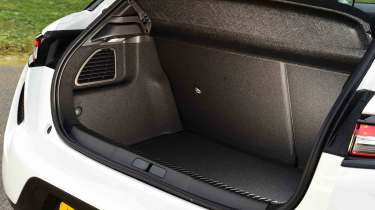
The DS 3 is a small five-door SUV, but it doesn’t offer much more in the way of practicality over larger superminis – there’s seating for five and an average-sized boot, but you’ll find more overall space inside a Volkswagen Polo.
We’re not fans of the driving position either. Hard seats and a limited range of adjustment to the driver’s seat and steering wheel mean you may find it hard to get comfortable behind the wheel. All-round visibility isn’t fantastic, but we found the car easy to place on the road. Its pronounced bonnet edges help make judging the car’s size around town easy.
Elsewhere, the DS 3’s odd ergonomics continue with cupholders located behind the gear selector, a wireless phone charger pad (where fitted) that might not fit larger phones, and small door bins. It may look interesting, but user-friendliness wasn’t a major priority when this small SUV was designed.
Dimensions and size
The DS 3 measures 4,118mm in length, 1,988mm wide (including mirrors) and 1,534mm tall. For comparison, the Audi Q2 is a little longer at 4,191mm and wider at 2,009mm (with mirrors), but is lower at 1,508mm. The decent ground clearance of 170mm is worth noting, and could be helpful on farm tracks or large speed bumps.
Leg room, head room & passenger space
Space for the driver and passenger in the front of the DS 3 is decent and it should prove comfortable sitting here, provided you can adjust the seats to suit. It’s a different story in the rear, where space for passengers’ legs and heads is limited and certainly below average for the class. If you plan on regularly carrying adults in the back, rivals like the Renault Captur and Volkswagen T-Cross are a better bet due to having a sliding rear bench with the opportunity to increase rear leg room. There’s enough space for children and smaller teenagers, though.
It’s quite dark and dingy in the rear too, thanks in part to tinted rear glass and a small glasshouse that’s interrupted by a protruding design feature on the high window line, so children may struggle to see out. ISOFIX points are supplied on the outer two rear seats.
Boot space
There’s an adequate amount of space in the back, with 350 litres on offer in both the petrol and electric DS 3, plus 1,050 litres of cargo space with the 60/40 split rear seats folded down. But by contrast, the MINI Countryman boasts a 450-litre boot that can expand to 1,390 litres.
Small issues include a high boot lip with a drop down to what is a rather deep boot floor, along with a rear bench that doesn’t quite fold flat – there’s a step between the boot and the folded seats that might hamper loading.
Towing
All petrol DS 3 models are rated to tow a braked trailer of up to 1,200kg or an unbraked trailer weighing up to 640kg. The maximum tow hitch download is 48kg. Anyone looking for more serious pulling power in a car of this size must go for the four-wheel drive ‘4Motion’ VW T-Roc, which can tow up to 1,700kg in both 2.0-litre petrol and diesel forms.
The electric E-Tense isn’t rated to tow anything, so if you need an EV that can tow, take a look at the Volvo EX30.
Reliability & safety

The standard, European-spec DS 3 was awarded a four-star safety rating from Euro NCAP – not a great result for this class. However, the addition of DS’s Safety Pack (standard in the UK) bumps that up to a full five stars, with an impressive 96% adult occupant score. All DS 3s sold here come with an emergency brake system, lane-keep assist, lane departure warning, speed limit recognition and intelligent speed adaptation.
The Safety Pack is a £1,000 option on all but the top-spec Opera model, and adds blind-spot detection, along with front parking sensors, and a 360-degree camera system.
Neither the DS 3 nor the DS brand appeared in our 2023 Driver Power customer satisfaction survey, but Citroen was voted into 11th place on a list of 32 manufacturers.
Warranty
All DS 3 models have a three-year/60,000-mile warranty. The all-electric DS 3 E-Tense also comes with an eight-year/100,000-mile battery warranty, which covers you if the charging capacity of the batteries falls below 70 per cent of their original capacity. The DS Assistance roadside assistance package is free for three years.
Servicing
DS provides the option of fixed-price servicing for all of its cars, and fixed-price maintenance is also available – with jobs such as brake replacement and timing belt changes offered at a set cost – but it’s unlikely you’ll need the majority of these during an average three-year PCP ownership cycle.


